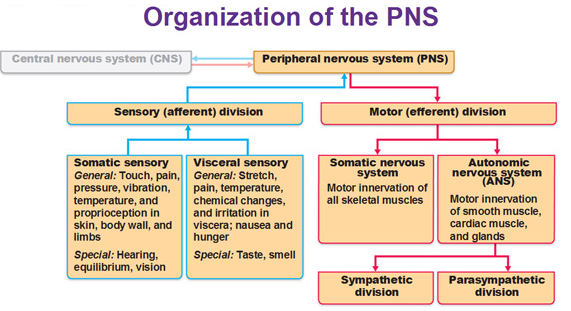Organization of the peripheral nervous system
The major progresses have been made in our understanding of autonomic and sensory transmission and function throughout the past two decades. These involve
(i) the establishment of the role of sympathetic and parasympathetic ganglia in relaying neuronal information from the central nervous system to effector organs.
(ii) the acknowledgment which enteric ganglia, the third component of autonomic nervous system, consist of independent integrative circuits which control complex local activities.
(iii) the verification for local effector functions of principal sensory nerves in addition to their role in the sensory transmission.
(iv) discovery of the plasticity of both autonomic and sensory neurons through disease states and inflammation.

The major contribution to these new concepts has been the acknowledgment that in both the autonomic and sensory ganglia a diversity of transmitters coexists in the single neurons. The Co-transmission is a widespread phenomenon which enables autonomic and sensory neurons to exert fine and highly regulated control of different functions like respiration, circulation, digestion, and immune response. This section will focus on the common principles and specific features of autonomic and sensory ganglia, with a specific emphasis on their common organization and neuro-chemical properties. The Classical concepts and modern principles of categorization of autonomic and sensory ganglia are explained.